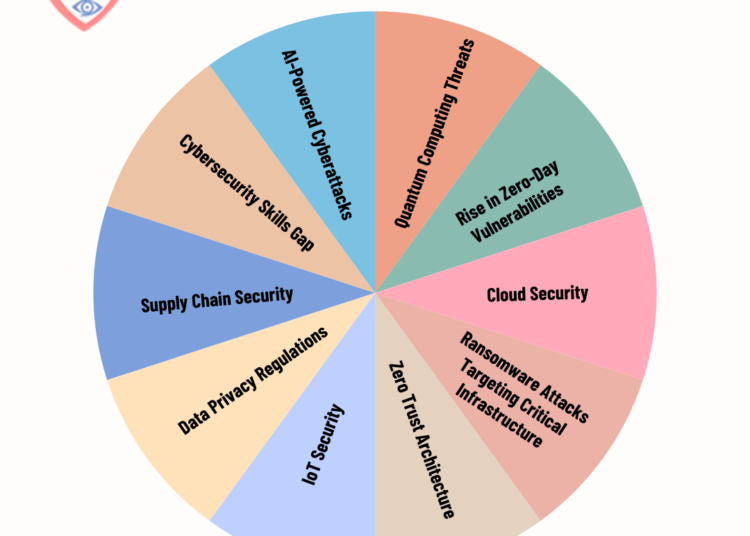Cybersecurity continues to evolve, responding to both technological advancements and new forms of cyber threats. Organizations across the globe are facing increasingly sophisticated cyberattacks, and staying ahead of the curve requires awareness of emerging trends and proactive defense strategies. Here are the key cybersecurity trends to watch out for in 2024

- AI-Powered Cyberattacks: Artificial Intelligence (AI) is not only being used for defense, but cybercriminals are also harnessing its power to launch more sophisticated attacks. AI-driven malware can adapt in real-time, bypass traditional security systems, and target specific vulnerabilities with unprecedented precision. In 2024, organizations will need to implement AI-based security systems that can predict, detect, and neutralize such threats autonomously.
- Quantum Computing Threats: Quantum computing is inching closer to reality, and with it comes the potential to break traditional encryption methods that secure data today. Although large-scale quantum computers are still in development, 2024 will see increased attention to quantum-resistant cryptography as organizations prepare for a future where quantum cyberattacks could become a genuine threat.
- Rise in Zero-Day Vulnerabilities: 2024 is expected to see a rise in zero-day vulnerabilities being exploited by attackers. These vulnerabilities are particularly dangerous because they are unknown to software vendors and remain unpatched. Companies must prioritize continuous vulnerability assessments and leverage machine learning tools that can identify anomalies before an exploit occurs.
- Cloud Security: As cloud services continue to grow, so does the attack surface. The shift toward remote work and cloud-based infrastructure makes cloud security a top priority in 2024. Misconfigurations and insecure APIs remain the leading causes of cloud breaches. Organizations must adopt comprehensive cloud security strategies, including encryption, multi-factor authentication, and continuous monitoring to prevent data leaks and unauthorized access.
- Ransomware Attacks Targeting Critical Infrastructure: Ransomware continues to be a major threat, but in 2024, we are likely to see more ransomware attacks targeting critical infrastructure, such as energy, healthcare, and transportation systems. These attacks can have catastrophic effects, leading to widespread service disruption. Governments and businesses alike must implement stronger defenses, including backup solutions, incident response plans, and sector-specific regulations to mitigate these risks.
- Zero Trust Architecture: The Zero Trust security model is gaining traction in 2024. Instead of assuming everything inside an organization’s network is secure, Zero Trust requires authentication and verification at every stage. It’s a shift from perimeter-based security to identity-based security, which ensures that every access request is validated, no matter the source or location.
- IoT Security: With billions of Internet of Things (IoT) devices being deployed globally, the attack surface for cybercriminals has expanded significantly. In 2024, securing IoT devices will be critical as they often lack robust security measures and can be entry points for larger attacks. Companies need to implement strict IoT security protocols, including device authentication, encryption, and regular firmware updates.
- Data Privacy Regulations: Data privacy continues to be a focal point in cybersecurity. With stricter regulations such as GDPR, CCPA, and others taking hold, businesses must ensure that their data handling processes are compliant. In 2024, more regions are expected to implement privacy laws, and non-compliance will lead to hefty fines and reputational damage. Organizations should focus on transparency, data minimization, and user consent to navigate this regulatory landscape.
- Supply Chain Security: Cybercriminals are increasingly targeting the supply chain as a vulnerable link in an organization’s cybersecurity defenses. In 2024, securing the supply chain will become a major focus for organizations, as attacks like the SolarWinds hack have demonstrated the far-reaching consequences of a compromised vendor. Companies need to audit their suppliers’ security practices and build resilience against third-party attacks.
- Cybersecurity Skills Gap: The global shortage of cybersecurity professionals is a growing concern in 2024. As the complexity and volume of cyberattacks increase, so does the demand for skilled professionals to defend against them. Investing in cybersecurity education and training is crucial for businesses and governments to fill this gap and strengthen their cyber defenses.










